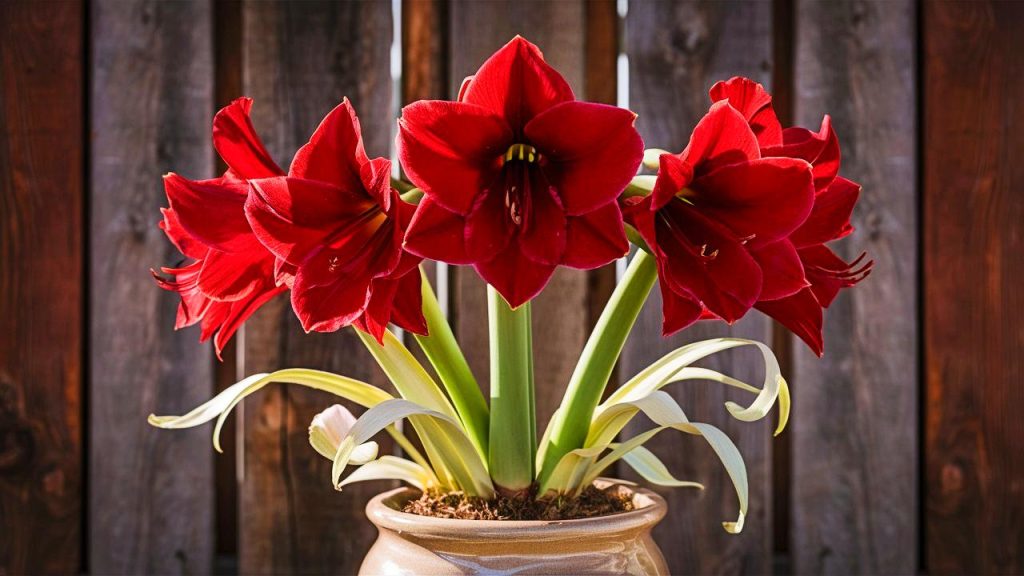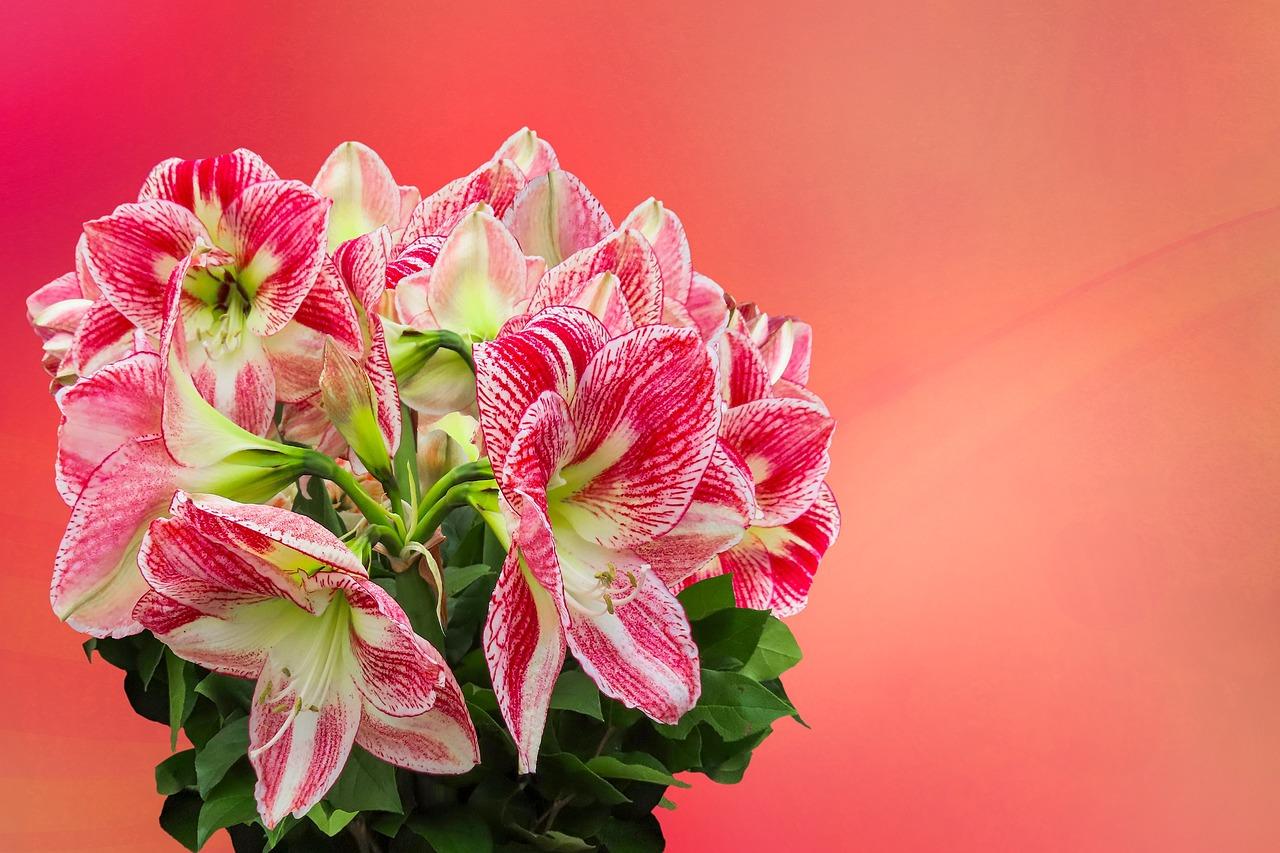For many, the excitement of planting an amaryllis is often accompanied by the anticipation of its bloom emerging. But how long does it take for amaryllis to bloom? In this comprehensive guide, we will explore the blooming timeline of amaryllis, factors affecting bloom time, cultivation tips, and much more.
Understanding the Amaryllis Lifecycle
The Growth Cycle
To appreciate how long it takes for amaryllis to bloom, it’s essential to understand its growth cycle:
Dormancy: Amaryllis bulbs need a period of dormancy after blooming. This phase typically lasts about 8-12 weeks and is crucial for the bulb’s health. During dormancy, the bulb stores energy and nutrients in preparation for the next growth cycle.
Pre-Planting Preparation: Before planting, you should inspect the bulb. Make sure it’s firm and healthy with no signs of mold or decay. It’s beneficial to give the bulb a couple of hours in a bucket of water so it can absorb moisture before planting.
Planting: The bulb is usually planted in potting soil, with the top third of the bulb above the soil line. This step is vital because it prevents rot and allows for the development of new blooms.
Growth Phase: Following planting, the amaryllis begins its growth phase, which includes sprouting leaves and developing the flower stalk. This phase is characterized by rapid growth.
Blooming: After approximately 6 to 10 weeks from planting, a well-cared-for amaryllis bulb should produce its first blooms, depending on conditions and bulb preparation.
Bloom Timeline
An amaryllis bulb typically takes about 6 to 10 weeks to bloom after planting. Illumination, temperature, and moisture levels significantly influence this timeframe. The bloom can last anywhere from 2 to 6 weeks, transforming your space with colors ranging from white and pink to red and even striped varieties.
Factors Affecting Bloom Time

The speed at which an amaryllis blooms can vary based on several factors:
1. Type of Bulb
Different varieties of amaryllis can have different growth rates. Varieties like ‘Apple Blossom’, ‘Red Lion’, and ‘Double Hippeastrum’ may exhibit varied blooming times and flower durations. Choosing the right variety based on your desired timeline can make a significant difference.
2. Temperature
Amaryllis generally prefers warmth to thrive. The ideal temperature for growth is between 65°F and 75°F (18°C to 24°C). If the environment is too cold, growth can slow down significantly. Conversely, too much heat can cause stress to the plant, inhibiting blooming.
3. Light Conditions
Amaryllis bulbs thrive in bright, indirect light. While they can bloom in lower light conditions, too little light will delay blooming or lead to weaker plants. Observing the right amount and intensity of light can make a difference in how quickly and robustly your plant blooms.
4. Watering Practices
Overwatering can lead to bulb rot, while underwatering can inhibit growth. The key is a balanced watering schedule. The soil should be kept moist but not soggy. Once the flowers begin to emerge, you can water more generously; this helps to maintain the blooms longer.
5. Nutrient Availability
Providing adequate nutrients fertilized correctly can help speed up the blooming process. A liquid fertilizer can boost growth, especially when applied every couple of weeks during the growth phase. However, avoid excess nitrogen after blooming; too much can inhibit flower formation in the next cycle.
6. Bulb Health and Size
The size and health of the bulb is a crucial factor. Larger, healthy bulbs with good storage can have more energy and nutrients, leading to quicker blooming. It’s advisable to choose bulbs that are at least 6-8 inches in circumference for optimal results.
Timing Your Planting for Desired Blooms
Holiday Blooms
If you want your amaryllis to bloom around the holidays (Thanksgiving and Christmas), plant your bulbs as follows:
For Thanksgiving Bloom: Plant in early to mid-October.
For Christmas Bloom: Plant in late November.
Spring and Summer Blooms
For spring blooms, you can start planting your amaryllis bulbs in February or March. For a summer display, consider planting them in late April to early May. Timing your planting not only aligns with seasonal celebrations but also allows you to enjoy a blooming spectacle throughout the year.
Care Tips for Amaryllis

To ensure your amaryllis blooms as beautifully and as promptly as possible, proper care is essential. Here are some tips to help you care for your amaryllis from planting through blooming and beyond.
1. Choosing the Right Container
When planting your amaryllis, select a pot that is both wide and shallow. A pot diameter of about 6-8 inches is suitable, as it allows the bulb to spread its roots while providing enough room for growth. Make sure the container has drainage holes to prevent excess water accumulation.
2. Soil Selection
Use a well-draining potting mix to ensure that the bulb remains dry at the bottom. A mix formulated for houseplants or a blend of potting soil, perlite, and peat moss will work well. A good soil mix helps provide the necessary drainage while retaining some moisture.
3. Watering Practices
Planting: When you first plant your amaryllis, water the soil well, allowing it to soak without flooding the bulb itself.
After Planting: Once the plant begins to grow, water it when the top inch of soil feels dry. Make sure to water thoroughly, allowing excess water to drain out the bottom.
During Bloom: When the flowers emerge, increased moisture may be beneficial as long as the soil doesn’t remain waterlogged.
4. Light Requirements
Place your amaryllis in a spot where it can receive bright, indirect sunlight. A south-facing window is ideal. If natural light is limited, consider using grow lights to supplement. This exposure to light helps the bulb to gather energy for blooming.
5. Fertilization
Fertilizing is crucial for healthy growth. Start fertilizing two weeks after the initial growth appears. Use a balanced, water-soluble fertilizer, diluted to half strength, every two weeks during the active growth phase. Once blooming begins, you can switch to a high-phosphorus fertilizer designed for flowering plants to promote more vibrant blooms.
6. Supporting Tall Stems
As the flower stalk grows, it may become top-heavy. If necessary, stake the stalk to provide additional support. Allowing the flowers to droop or arch could stress the plant and shorten the life of the blooms.
7. Post-Bloom Care
After the flowers fade, do not cut down the leaves immediately. The foliage is essential for photosynthesis and helps the bulb store energy for the next bloom. Continue to care for the plant by watering and fertilizing as previously described. When the leaves start to yellow and die off (usually around late spring to early summer), you can stop feeding and allow the plant to enter its dormancy phase.
8. Preparing for Dormancy
To prepare your amaryllis for dormancy, reduce watering gradually and stop fertilizing. Allow the foliage to die back naturally. Once the leaves are completely yellow and have died down, cut them back to about 1 inch above the bulb. Store the bulb in a cool, dark, and dry place for about 8-12 weeks.
9. Replanting for New Blooms
After the dormancy period, you can replant your amaryllis using the same process you initially used. Remove the bulb from storage, check for any signs of rot, and plant it in fresh potting mix. Give the bulb a good soaking to jumpstart growth, and place it in a warm and bright location.
Common Issues and Troubleshooting
Despite the ease of growing amaryllis, you may encounter some common issues. Here are solutions to help your plant thrive:
1. Lack of Blooms
If your amaryllis isn’t blooming, it may be due to insufficient light, lack of nutrients, or the plant not receiving the necessary dormancy. Ensure it receives adequate light, adjust your fertilization practices, and adhere to the dormancy cycle.
2. Drooping Stems
Drooping stems can indicate a lack of water or insufficient light. Evaluate the plant’s water needs and its light exposure. If necessary, give it support with a stake.
3. Pest Problems
Amaryllis is relatively pest-resistant. However, watch for aphids, spider mites, and mealybugs. Treat infestations early with insecticidal soap or neem oil. Regularly inspecting the leaves helps catch issues before they escalate.
4. Leaf Yellowing
Yellowing leaves could signify overwatering or insufficient light. Check the moisture levels in the soil and ensure the plant receives enough light. If the bulb sits in the same pot for too long, root binding might occur, necessitating repotting.
Conclusion
In summary, amaryllis bulbs take about 6 to 10 weeks to bloom after planting, influenced by a variety of factors, including the type of bulb, temperature, light, and care practices.





